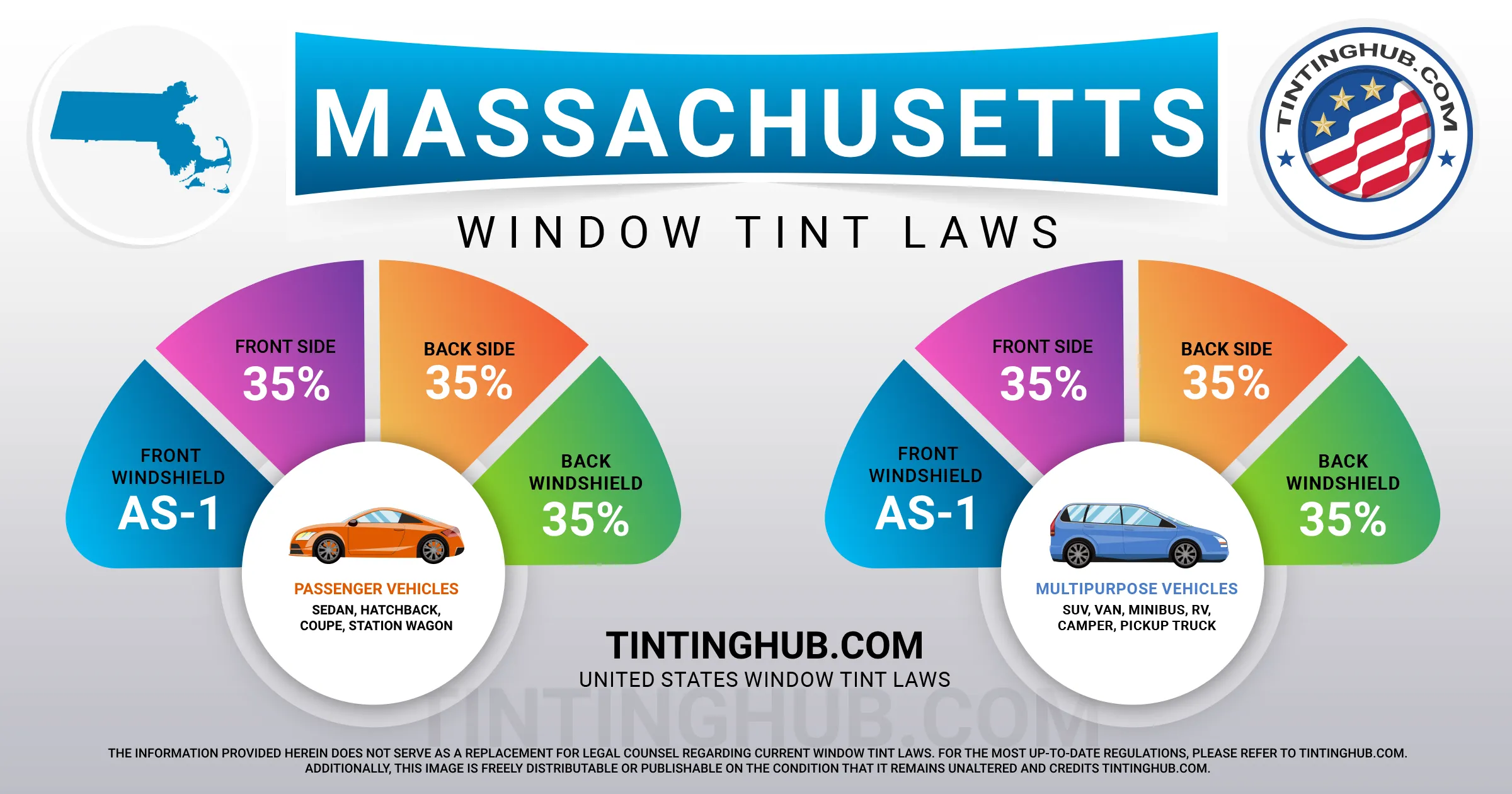Massachusetts Window Tint Laws (Last Update 2024)

Car window tinting regulations have been a part of Massachusetts legislation since 1985. In this comprehensive guide, we’ll delve into the specifics of these laws, ensuring you’re well-informed about the darkness, reflection, and other regulations that govern car window tinting in the Bay State.

Understanding Window Tint Darkness in Massachusetts
In the world of car window tinting, VLT, or Visible Light Transmission, is a crucial term to grasp. It refers to the percentage of visible light permitted through your car windows. Massachusetts has stringent regulations, which differ for sedan cars and SUVs or vans.
Tint Darkness for Sedans:
- Windshield: Non-reflective tint is allowed on the AS-1 line or top 6 inches of the windshield.
- Front Side Windows: Must allow more than 35% of light in.
- Back Side Windows: Must allow more than 35% of light in.
- Rear Window: Must allow more than 35% of light in.
Tint Darkness for SUVs and Vans:
- Windshield: Non-reflective tint is allowed on the AS-1 line or top 6 inches of the windshield.
- Front Side Windows: Must allow more than 35% of light in.
- Back Side Windows: Must allow more than 35% of light in.
- Rear Window: Must allow more than 35% of light in.
Decoding Window Tint Reflection in Massachusetts
Window tint not only provides privacy but also reduces glare and heat. It can reflect incoming light, and Massachusetts has clear laws regarding this aspect.
Tint Reflection for Sedans:
- Front Side Windows: Must not be more than 35% reflective.
- Back Side Windows: Must not be more than 35% reflective.
Tint Reflection for SUVs and Vans:
- Front Side Windows: Must not be more than 35% reflective.
- Back Side Windows: Must not be more than 35% reflective.
Uncovering Additional Massachusetts Window Tint Regulations
Beyond darkness and reflection, Massachusetts has other important regulations related to window tinting:
- Side Mirrors: If the back window is tinted, dual side mirrors are required.
- Restricted Colors: Massachusetts doesn’t prohibit specific auto tint colors.
- Certificates: Manufacturers of window tint film aren’t obligated to certify their products in the state.
- Stickers: While state law recommends stickers to identify legal tinting, it’s not mandatory.
- Medical Exceptions: Massachusetts does allow medical exemptions for special tint, with specific terms to be confirmed through state law.
- Penalties: Violating tinting laws can result in fines of up to $250, with third or subsequent convictions leading to a 90-day driver’s license suspension.
Final Thoughts
It’s important to note that interpretations of Massachusetts tinting laws may vary by county or place of residence. We strongly advise cross-referencing this information with your local RMV or law enforcement authorities to ensure compliance.
Our commitment to accuracy drives us to keep this information up-to-date. As of 2023, this is the most current guide to Massachusetts’ window tinting laws. If you come across any inaccuracies, please don’t hesitate to contact us so we can promptly rectify the information.
Trust us as the industry leader in providing accurate and reliable window tint laws information.